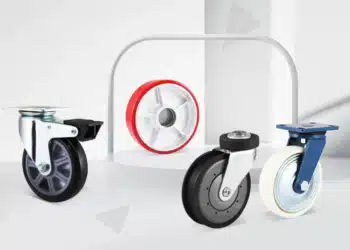Your office is not just a place of work; it’s the face of your company, the very first impression many clients and partners receive. Creating an inviting and productive work environment is essential in today’s competitive business landscape. Key to this are the often-overlooked linchpins of office design: the reception desks, the coordinated office furniture, and, crucially, the seating that provides ergonomic support and comfort. Let’s delve into how you can make these elements work together harmoniously, enhancing both the aesthetic appeal and functionality of your workspace.
The Centrepiece of Reception: The Desk
The office reception desk is not just a functional piece of furniture; it sets the tone for the entire office. When visitors enter, the reception area acts as the threshold to your business domain, and the desk is often the first thing they see and approach. Choosing the right design means finding a balance between style, size, and practicality.
An ideal office reception desk is welcoming yet professional, with enough space for reception tasks. Don’t just think in terms of the immediate present; consider future needs as well. Will you need more storage or space for additional technology? Can the desk be adapted or expanded as your business grows?
Creating Harmony with Coordinated Furniture
A well-put-together office speaks volumes about your company’s organisation and culture. When selecting office furniture, think about the coherent narrative you want to tell. Do the colours and designs reflect your brand? Are the furniture pieces stylistically compatible? Coordination doesn’t mean all pieces must be identical; it means they need to complement each other, creating a cohesive look.
Consider how each piece will be used. Managers may require larger, more private desks, while the sales team could benefit from a collaborative cluster of workstations. Functionalities such as adjustable heights and built-in cable management can make a significant difference in day-to-day operations.
Comfort Meets Productivity: Ergonomic Seating
An often underestimated aspect of office furniture is the seating. Investing in an ergo office chair is not a luxury; it’s a necessity. Ergonomics goes beyond mere comfort, addressing the long-term health and well-being of employees. The right chair can reduce the likelihood of work-related ailments, boost productivity, and make those long hours at the office much more bearable.
Ergo office chairs come in a range of styles and functionalities, but the key features to look for include adjustable seat height, lumbar support, adequate seat depth and width, and a recline feature. These elements help maintain proper posture and reduce strain on the body.
Integrating Style and Function in Reception Chairs
Reception area chairs often serve as a waiting space for visitors, so comfort is paramount. Choose chairs that reflect the style of your overall office design while providing sufficient support. Consider materials that are durable and easy to clean, as these chairs will see a lot of traffic and need to remain presentable.
Task Chairs for Employees
For your employees, task chairs should be at the forefront of your checklist. As your team spends a considerable amount of time seated, each chair needs to be ergonomically sound to support a range of body types and working styles. Task chairs are oftentimes the go-to option, equipped with mechanisms that adjust to the user’s movements.
Meeting Room Considerations
Meeting rooms often require a different set of considerations. Chairs here should facilitate good posture and movement yet maintain a formality fitting for client meetings and team collaborations. Look for designs that align with the office’s aesthetic and provide comfort for variable lengths of sitting.
Practical Aspects of Office Design
While aesthetics are important, don’t overlook the practical aspects of your furniture selection. Will your choice stand up to the test of time, both in style and durability? Does it offer flexibility for a growing team?
Opt for pieces with warranties, as this is often an indication of the manufacturer’s confidence in their products’ longevity. Additionally, consider the materials used—not only for their durability but also for environmental impact. Eco-friendly options can boost your company’s green credentials and appeal to socially conscious clientele and staff.
Bringing It All Together
Designing an office interior that reflects your company’s brand, encourages productivity, and welcomes visitors warmly requires meticulous planning. The reception desk is the cornerstone of first impressions; it should be both functional and stylish. Coordinated office furniture enhances the professional atmosphere and supports your team’s work style. Meanwhile, ergonomic seating is a crucial element for maintaining health and increasing efficiency.
Ultimately, your office is a complex ecosystem that thrives on harmony between design elements and functionality. Invest in it wisely. Embrace the elements of an inviting reception desk, purposeful office furniture arrangements, and, importantly, the right ergonomic chairs that tend to the needs of those who use them every day. And remember, your office’s interior design is not only about making the space appealing; it’s about creating an environment where business flourishes.
By considering these factors, you’re on the path to creating an office space that is both a welcoming haven for visitors and a haven for productivity.








